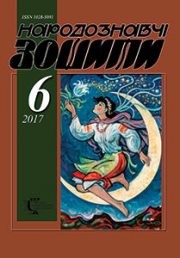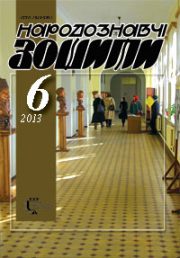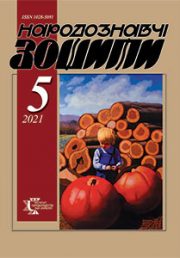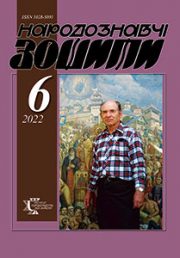The Ethnology Notebooks. 2019. № 1 (145). P. 1–280
DOI https://doi.org/10.15407/nz2019.01
SKLYARENKO Galina
FOLKLORE CULTURE IS IN THE UKRAINIAN CONTEMPORARY ART
13—19
CHUYKO Oleh
DUAL FAITH IN THE MEDIEVAL CULTURE OF PRECARPATHIAN POPULATION
29—34
LEBEDIEVA Alona
DIFFICULTIES OF TRANSLATION: BETWEEN «ETHNIC» AND «DESIGN»
41—47
YAMBORKO Olha
UKRAINIAN THEMATIC CARPET OF 1930 —1960s AS AN ART PRACTICE OF SOCIAL REALISM
57—65
MOTYL Romana
POTTERY CENTRE IN CHERVONOGRAD — THE ECHO OF THE PAST IN MODERN TIMES
66—72
SHEVCHUK Vasil
MASTERS OF ARTISTIC WOOD OF KIEV REGION AT THE BEGINNING OF THE XXI CENTURY
92—98
SELIVACHOV Michael
WHY RESEARCHER SHOULD POSSESS AN ART’ COLLECTION?
157—167
BOLYUK Oleh
COLLECTIONIST VS MUSEOLOGIST? (BASED ON GATHERING OF FOLK CLOTHES)
168—178
OLARJESKU Dumetru
THE ROLE OF DOCUMENTARY FILM IN PRESERVATION AND VALORIZATION OF FOLK ART
214—220








